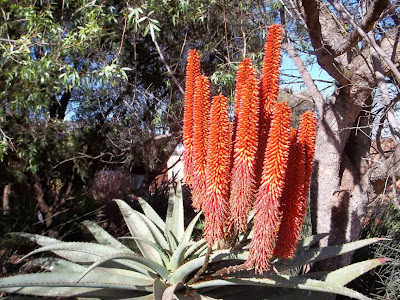My rooster Artemis announcing the start of day
Normally, at 4am like clock-work, I'm awakened by Artemis announcing the start of another day. In summer it can be as early as 3am! This sets off ALL Solly's roosters and I can assure you, NOTHING can sleep through that racket! Their crowing has now set MY internal clock and I'm normally awake just before the crowing starts.
The rooster's morning cock-a-doodle-doo is driven by an internal clock, finds new research, suggesting that male chickens really know the time of day.
The study, detailed in the journal Current Biology, found that roosters put under constant light conditions will still crow at the crack of dawn.
Past studies have found that a myriad of animal behaviors are driven by an internal clock: at night, a dip in insulin causes humans to process food more slowly, and even blind cave fish use a circadian clock to tell time.
"Cock-a-doodle-doo' symbolizes the break of dawn in many countries," said study author Takashi Yoshimura of Nagoya University, in a statement. "But it wasn't clear whether crowing is under the control of a biological clock or is simply a response to external stimuli."
Because stimuli throughout the day — such as car headlights — will set off a rooster's crow at any time, it was also possible that increasing light was the trigger for the cock's crows.
To find out Yoshimura and his colleagues put 40 roosters in a setting with constant light, then recorded when they crowed.
Sure enough, the chickens crowed at daybreak regardless of the light conditions. The roosters also crowed at other times of day and in response to light and the crows of their fellow chickens, but those behaviours were much stronger at daybreak. The findings suggest that an internal circadian clock, rather than external conditions, drive the behavior.
Read more at Mother Nature Network
.






















